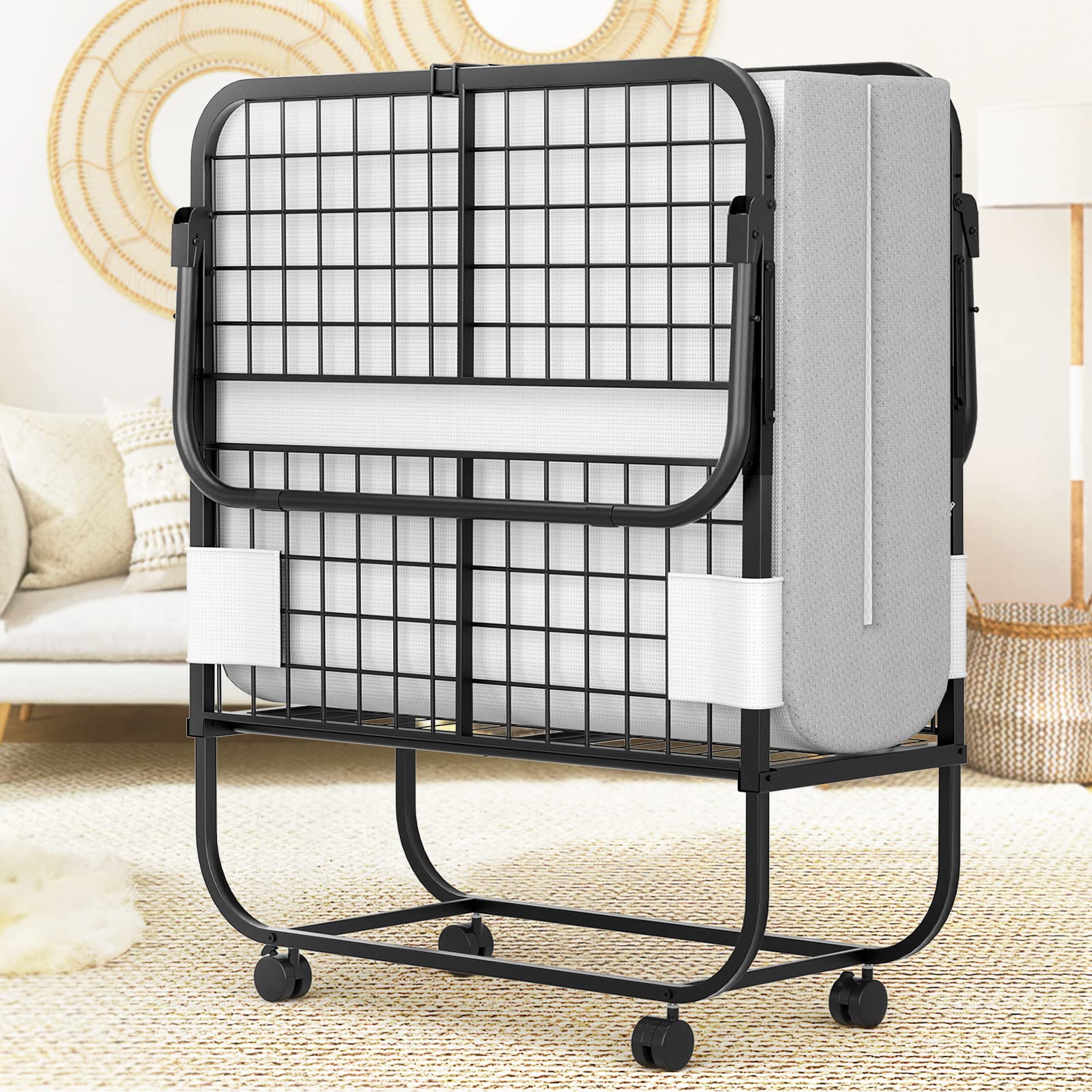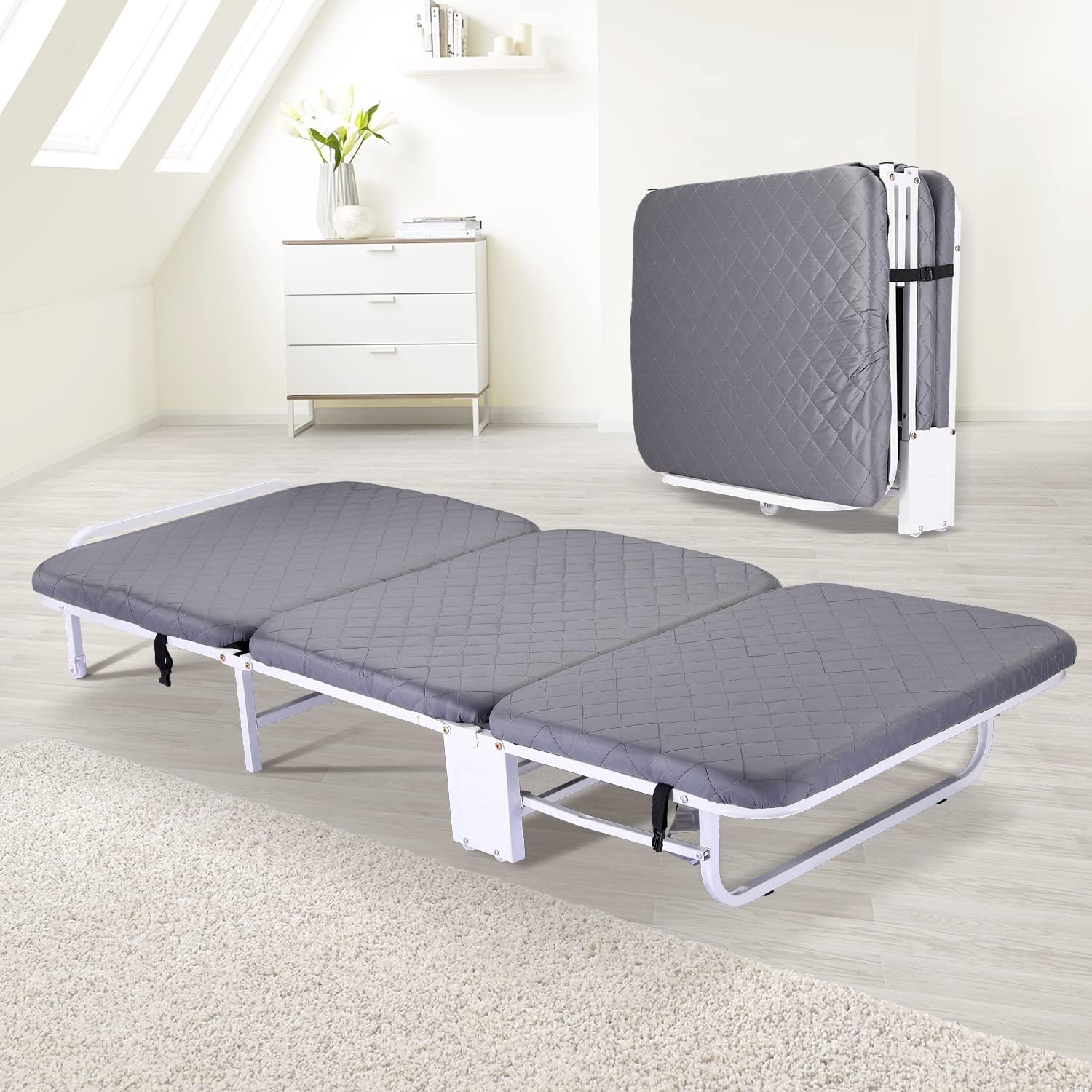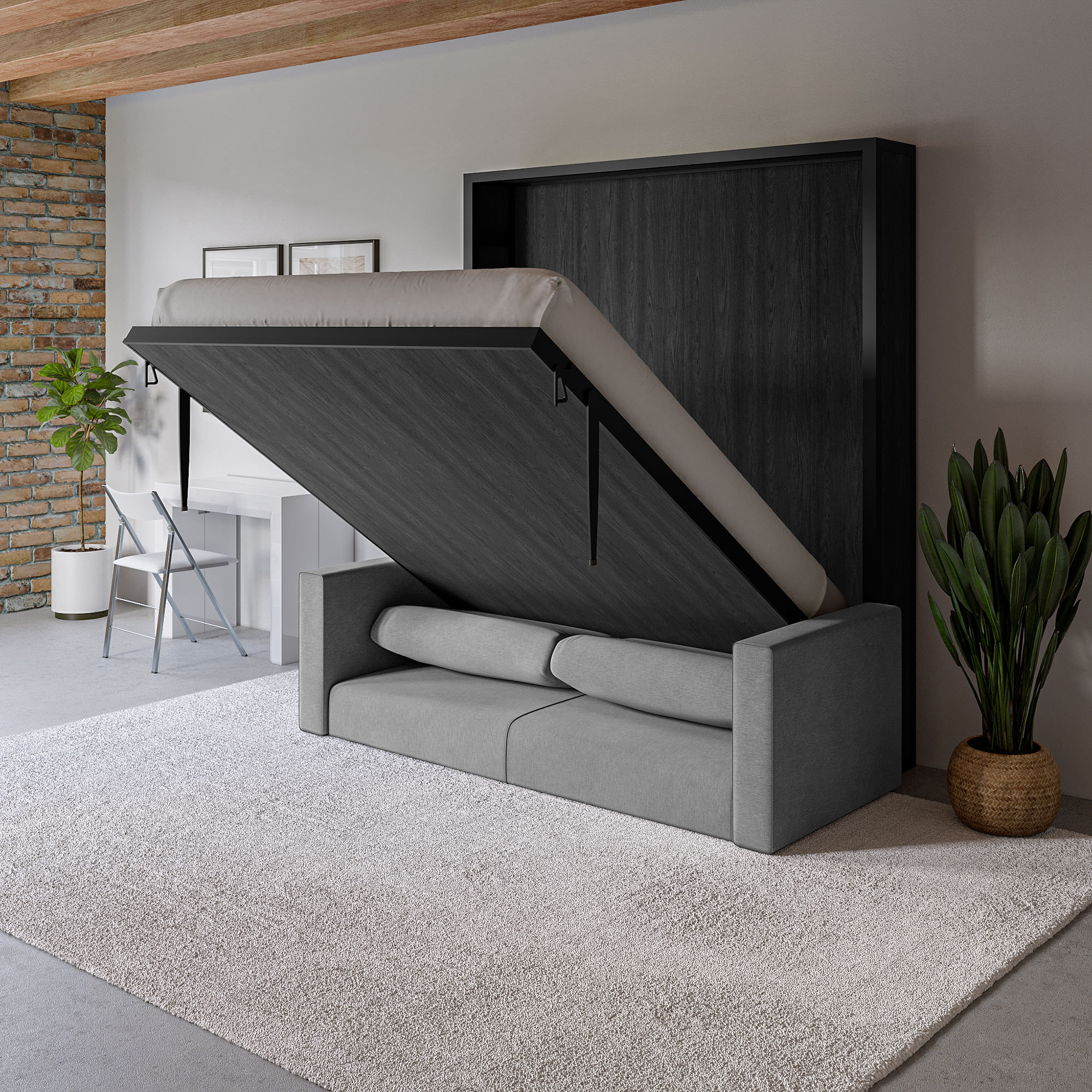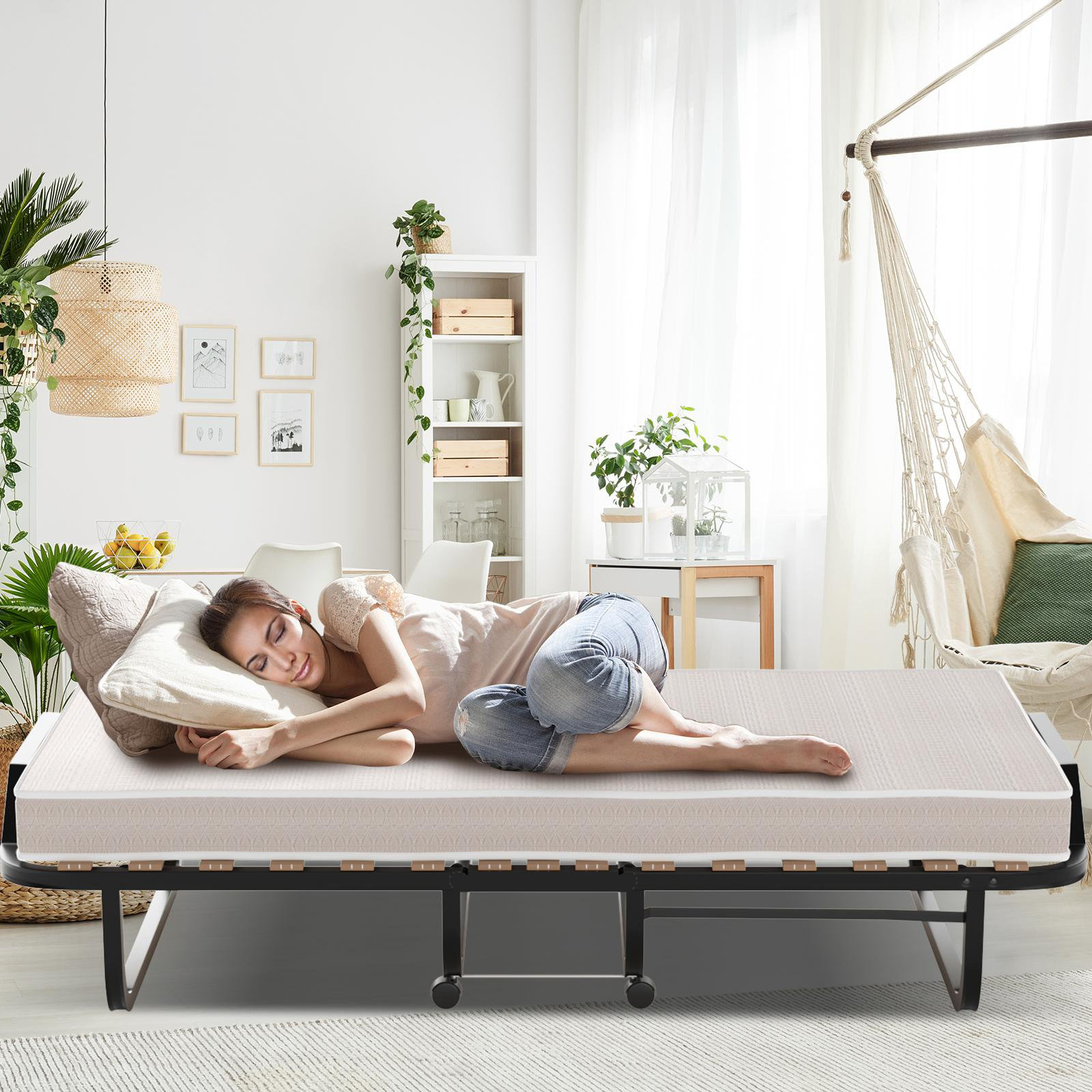Introduction
In a world where living spaces are getting smaller and maximizing every square inch has become essential, the folding bed emerges as a beacon of practicality and comfort. Whether you’re living in a compact urban apartment, hosting guests in your cozy home, or simply looking for versatile furniture solutions, a folding bed can be a game-changer. This comprehensive guide will walk you through everything you need to know about folding beds, from their benefits and types to key features and buying tips.

Understanding the Appeal of Folding Beds
1. Versatile Use: Folding beds are incredibly versatile, making them suitable for various purposes:
- Guest Accommodation: Perfect for hosting overnight guests without permanent space dedication.
- Small Apartments: Ideal for studio apartments or small living spaces where multifunctional furniture is crucial.
- Travel and Camping: Portable options make for comfortable sleeping solutions on trips or outdoor adventures.
2. Space Efficiency: One of the most significant advantages of folding beds is their ability to save space. When not in use, they can be easily folded and stored away, freeing up valuable floor space for other activities.
3. Easy Setup and Storage: Modern folding beds are designed for easy setup and takedown, often requiring minimal effort. Many come with wheels for mobility, foldable frames for compact storage, and even built-in storage compartments for bedding.
4. Cost-Effectiveness: Compared to traditional beds, folding beds are often more affordable, offering a budget-friendly solution for those in need of an extra sleeping arrangement without the financial commitment of a permanent bed.
Types of Folding Beds
1. Rollaway Beds: Rollaway beds, also known as foldaway beds, feature a metal frame with wheels for easy movement. They typically come with a thin mattress that folds along with the frame. These are ideal for quick guest accommodations and can be stored in closets or corners.
2. Murphy Beds: Murphy beds, or wall beds, are designed to fold up vertically into a wall or cabinet when not in use. They are perfect for maximizing space in small apartments or multifunctional rooms, offering the comfort of a regular bed with the convenience of folding away.
3. Sofa Beds: Sofa beds serve dual purposes as both seating and sleeping arrangements. They look and function like regular sofas but can be transformed into beds by unfolding the hidden mattress and frame. Great for living rooms or home offices that double as guest rooms.
4. Trundle Beds: Trundle beds consist of a main bed frame with a secondary, lower bed on wheels that can be pulled out when needed. While not technically folding, they offer a similar space-saving solution for accommodating extra sleepers.
5. Futon Beds: Futons are similar to sofa beds but typically have a simpler design, consisting of a mattress that folds to form a sofa and unfolds to create a bed. They are popular in minimalist and modern interiors.
Key Features to Look For
1. Frame Quality: A sturdy frame is essential for the durability and stability of a folding bed. Look for materials like steel or reinforced wood that can withstand regular use without compromising comfort.
2. Mattress Comfort: The comfort of the mattress is crucial for a good night’s sleep. Consider options with memory foam or high-density foam mattresses, which offer better support and comfort compared to thin, coil-based mattresses.
3. Portability: If you plan to move the folding bed frequently, choose one with wheels and a lightweight frame. Portability is especially important for rollaway and trundle beds.
4. Ease of Assembly: Opt for folding beds that come with clear instructions and require minimal tools for assembly. Some models come pre-assembled or with easy-to-follow steps, making setup a breeze.
5. Storage Solutions: Some folding beds come with built-in storage options, such as drawers or compartments, for storing bedding, pillows, or other essentials. This feature adds extra convenience and maximizes space efficiency.
Buying Tips
1. Measure Your Space: Before purchasing a folding bed, measure the available space to ensure it fits comfortably when both folded and unfolded. Consider the height, width, and depth of the area where you plan to place the bed.
2. Test for Comfort: If possible, test the bed for comfort before buying. Lie down on the mattress to gauge its support and cushioning. If buying online, read customer reviews and check return policies in case the bed doesn’t meet your expectations.
3. Check Weight Capacity: Make sure the folding bed can support the weight of the intended users. Most manufacturers provide weight capacity information in the product specifications.
4. Compare Brands and Models: Research different brands and models to find the best combination of quality, features, and price. Look for reputable brands known for their durable and comfortable folding beds.
5. Consider Warranty and Customer Support: A good warranty and reliable customer support can provide peace of mind. Check the warranty terms and availability of customer service in case you encounter any issues with the bed.
Maintaining Your Folding Bed
1. Regular Cleaning: Keep your folding bed clean by regularly vacuuming the mattress and wiping down the frame. Use a mattress protector to safeguard against spills and stains.
2. Proper Storage: When not in use, store the bed in a dry, cool place to prevent mold and mildew. Avoid placing heavy items on top of the folded bed, which could damage the frame or mattress.
3. Periodic Inspections: Periodically inspect the bed for any signs of wear and tear. Tighten loose screws or bolts and replace any damaged parts promptly to ensure the bed remains safe and functional.

Advanced Features to Consider
1. Adjustable Frames: Some folding beds come with adjustable frames, allowing you to modify the bed’s incline at the head or foot. This feature can enhance comfort, particularly for those who need specific sleeping positions for medical reasons or personal preference.
2. Enhanced Mobility: Look for beds with lockable wheels to ensure stability when the bed is in use but still provide ease of movement during setup or storage. Some models also feature swivel casters for better maneuverability.
3. High-Quality Upholstery: If you’re opting for a futon or sofa bed, consider the quality of the upholstery. Materials like microfiber, leather, or high-density fabric can offer durability and easy maintenance, making these beds both stylish and practical.
4. Integrated Headboards: Certain folding beds, especially Murphy beds, come with integrated headboards or shelving units. These additions can enhance the bed’s aesthetics and provide convenient storage space for personal items, books, or decorative elements.
5. Under-Bed Storage: Trundle beds with built-in drawers or rollaway beds with under-bed storage compartments can maximize space efficiency by offering additional room for storing bedding, pillows, or other essentials.
Specific Use Cases
1. Guest Rooms: For guest rooms, consider a Murphy bed or a high-quality rollaway bed. These options offer the comfort of a regular bed while freeing up space when not in use. Murphy beds, in particular, can be customized to match the room’s decor and often include additional storage solutions.
2. Home Offices: If your home office doubles as a guest room, a sofa bed or futon can be an ideal choice. These beds offer seating during the day and a comfortable sleeping area at night, maintaining the room’s functionality without compromising on comfort.
3. Kids’ Rooms: Trundle beds are excellent for children’s rooms, providing an additional sleeping space for sleepovers without taking up much floor space. They can be easily pulled out and tucked away, keeping the room neat and organized.
4. Studio Apartments: In studio apartments, maximizing every inch of space is crucial. A Murphy bed or a high-quality futon can serve multiple purposes, transforming your living area into a bedroom seamlessly. Look for designs that blend well with your interior decor.
5. Travel and Camping: For travel or camping, portable folding beds such as lightweight rollaway beds or compact futons are perfect. Ensure they are easy to transport, set up, and store. Some models are specifically designed to withstand outdoor conditions.
Design Considerations
1. Aesthetics: Choose a folding bed that complements your home’s decor. Modern designs offer sleek lines and stylish finishes, allowing the bed to blend seamlessly with your existing furniture. Murphy beds, for example, can be customized with cabinets and shelves that match your room’s style.
2. Material Quality: The materials used in the frame and mattress significantly impact the bed’s durability and comfort. Opt for high-quality materials such as solid wood, metal alloys, and memory foam mattresses. These materials ensure longevity and consistent support.
3. Color and Finish: Consider the color and finish of the bed, especially for visible parts like the frame or upholstery. Neutral colors typically blend well with most interiors, while bold colors or patterns can add a focal point to the room.
4. Customization Options: Some brands offer customization options, allowing you to choose features like mattress type, frame material, and additional storage units. Customizable beds can be tailored to meet your specific needs and preferences.

Tips for Maximizing Comfort
1. Use High-Quality Bedding: Invest in good-quality sheets, pillows, and blankets to enhance the comfort of your folding bed. Memory foam pillows and breathable bedding materials can significantly improve your sleeping experience.
2. Add a Mattress Topper: A mattress topper can add an extra layer of comfort to your folding bed, especially if the mattress is thin or firm. Choose a topper made from memory foam or latex for optimal support and cushioning.
3. Regularly Rotate the Mattress: If possible, rotate the mattress periodically to ensure even wear and prolong its lifespan. This practice helps maintain the mattress’s shape and comfort over time.
4. Ensure Proper Support: Make sure the bed frame provides adequate support for the mattress. A well-supported mattress contributes to better sleep quality and prevents sagging.
5. Maintain a Clean Sleeping Environment: Regularly clean the bed frame and mattress to keep them free from dust and allergens. Use mattress protectors and washable covers to maintain hygiene and extend the life of your folding bed.

Conclusion: Embrace the Comfort and Convenience
The folding bed is an invaluable addition to any home, offering a perfect balance of space-saving functionality and comfortable sleeping arrangements. By understanding the different types, features, and maintenance practices, you can select the ideal folding bed to meet your needs. Whether you’re optimizing a small living space or preparing for unexpected guests, a well-chosen folding bed ensures you never compromise on comfort or style. Embrace the versatility of folding beds and transform your home into a haven of space-efficient comfort.

